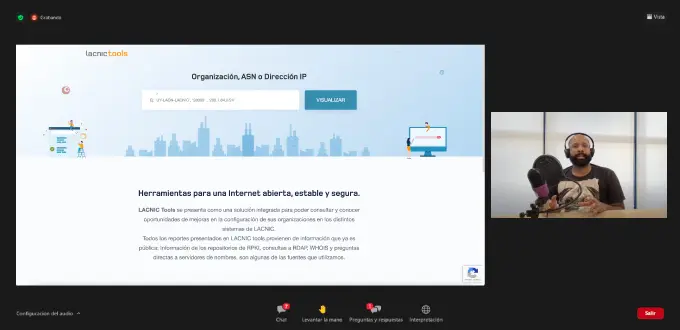LACNIC Presents LACNIC Tools
18/05/2021

LACNIC’s Technology department presented LACNIC Tools during its latest Technology Hour, a space at LACNIC 35 reserved for sharing the latest technological developments by the Latin America and Caribbean Internet Address Registry.
According to Gerardo Rada, Head of Systems Development at LACNIC, LACNIC Tools is an integrated solution that allows checking and discovering opportunities for improving their organizations’ configurations in LACNIC’s different systems.
Rada pointed out that LACNIC Tools prepares reports based on information that is already in the public domain. Information from RPKI repositories, RDAP queries, the WHOIS database and direct queries to name servers are some of the sources used by the Regional Internet Registry for Latin America and the Caribbean.
LACNIC Tools is an integrating application that centralizes access to all the systems and provides a high-quality, unified service that is more robust.

Rada noted that MiLACNIC Query allows users to query the different databases managed by LACNIC from a single location. Although the tool has a special section for querying LACNIC’s Internet Routing Registry (IRR), it also obtains information from the WHOIS database, RDAP, and RDAP Web, and will soon include information from the RPKI system.
In his presentation, Rada showed examples of how to perform a search by IP addresses, by contacts, by organizations, by autonomous systems, IPv6 and, of course, IPv4.
In each of these cases, the system displays WHOIS information, as well as information from the IRR, RDAP, RDAP Web and RDAP Embed.
(Free access, no subscription required)
WHOIS is the database that contains information about who has custody of a specific Internet resource (IPv4/IPv6/ASN) assigned within the LACNIC service region.
The Internet Routing Registry (IRR) has information on the use of IPv4 and IPv6 address blocks and autonomous system numbers assigned in the LACNIC service region.
RDAP is an improved WHOIS database that seeks to standardize the replies provided by the different registries. It can be access via HTTPS and uses RESTful techniques to access and display the information.